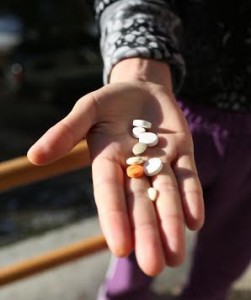
The Romanian Angel Appeal Foundation and the Association for MDR-TB Patients Support conducted in February – March a survey among Romanian TB and MDR-TB patients, their families and specialists working in the field, in order to pinpoint the patients’ social, psychological and medical needs. The survey report was published in June and it shows the main needs reported by patients or identified by the professionals who work with them.
Context
In 2013, more than 15,000 cases of tuberculosis (TB) have been diagnosed in Romania.
According to the statistics provided by the National Tuberculosis Control Programme (NTP), 30,000 people with TB, MDR-TB and XDR-TB were under treatment in Romania in 2011, of which 65% were men. Under-diagnosis of patients with resistant tuberculosis combined with high estimates of the number of such cases is perhaps the most serious problems the Romanian system of tuberculosis prevention and control is facing today. According to estimates by the World Health Organization (WHO), about 800 new MDR/XDR-TB cases should be diagnosed annually in Romania, but in reality only about 400 new cases of multi-drug resistant tuberculosis (MDR-TB) and extensively-drug resistant tuberculosis (XDR-TB) are identified.
In the context of a severe underfunding of the National Tuberculosis Programme, lack of quality and complete therapy, high risk of default, a law is necessary to protect and ensure the rights of TB patients. This study precedes the law that the Romanian Angel Appeal Foundation and Association for MDR-TB Patients Support will draft and submit to decision-makers and provides data as a basis for the law provisions.
Methodology
The analysis was based on data collected through: sociological survey among 80 TB patients from the pulmonology hospitals in Bucharest and Bisericani (Neamt County), five focus-groups with TB and MDR-TB patients and their families, three focus-groups with professionals and four interviews with representatives of public institutions having a role in the development and implementation of TB prevention and control in Romania.
Starting from an analysis model called “The patient journey map”, the evaluation follows the TB and MDR-TB patient on the road from “life before diagnosis”, through experiences of diagnosis, hospitalisation, treatment, all the way to resuming everyday life.
For each stage, the patients’ needs were revealed, in context – together with information about the patients’ medical and emotional experiences, focusing on the turning points in the patient’s journey when these needs can be particularly noted.
Results
The profile resulted from the survey shows that the Romanian TB patient is more likely male (70%), between 36 and 45 years old (28%), equally living in the urban or rural areas, unemployed (44%), without imprisonment record and without dependent children. The average monthly income is of 125 EUR.
The data suggest that, for a successful track of the TB patient (concluded with complete recovery and social integration), one must address the risks that the patient is exposed to even before contracting the disease (proximity to infected people or who had the disease, difficult life conditions, lack of housing, stress, a general poor health etc.)
As for diagnosis, the most pressing need identified is to have a rapid result and to reduce uncertainty: the patients have difficulties in coping with delayed, sometimes even wrong diagnoses and they do not receive clear explanations about their health problems, what’s coming next, how they can be treated correctly.
During therapy, the patient’s main needs are related to medical, social and psychological support necessary for the successful completion of the treatment. They need support in order to overcome the side effects of medication, to procure the drugs and paramedical supplies for co-morbidities and side effects. Without the confidence that their families will have the necessary resources while they’re gone, the patients who are the main income providers in a household will do whatever is necessary to shorten the hospitalisation periods and to avoid becoming a burden for their families.
TB patients’ quality of life should be considered not only during treatment, but after recovery as well. Since they are mostly people of working age, measures to ensure their maintenance and their reintegration into the labour market are necessary, especially for MDR and XDR patients who must spend many months hospitalized.
The full report can be found below:
http://raa.ro/wp-content/uploads/2014/06/Mapping_TB_Patients_Needs_Report.pdf
Source: TB Europe Coalition